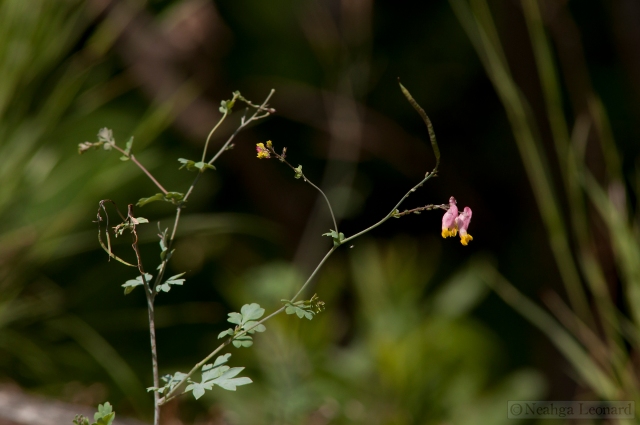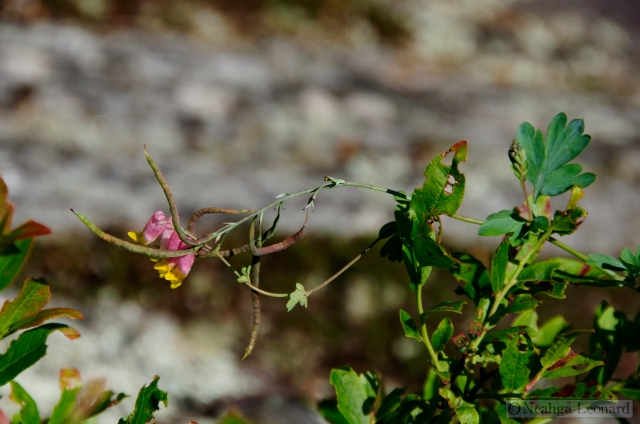The distribution of organisms in the environment is a particularly interesting subject. We know that individual representatives of the different kingdoms have specific requirements for establishment and growth. We know this at an almost intuitive level and we apply this knowledge daily when we amend soils for our gardens, move houseplants into or out of the sun, and make sure our pets are fed and watered. If we need more tomato plants, we go to the store and buy young ones or seeds and plant them, likewise we buy puppies, kittens, or fish for our homes, taking them with us when we move from place to place. We rarely ask the question of how living creatures move about in the absence of humans. How they disperse.
This is a problem all living things face, and they all solve it in slightly different ways. Obviously, for mobile creatures, birds, reptiles, fish, mammals, insects, and all their cousins, this can be handled in a relatively straightforward fashion by simply getting up and going somewhere else. Clearly there are particular variations on the theme. Red Efts in New England are born in the water, stay there for a time, move onto land as non-breeding adolescents, then return to the water as breeding adults. The majority of them don’t travel far, but a few adults find themselves in a different body of water than they started in, thus slowly expanding the range of the species. Yes, legs are helpful.
In earlier posts I have mentioned how some insects spend most of their life hidden from us, entering their highly visible state only to breed and find new territories.
It has long been recognized that our understanding of how plants, fungus, and all the traditionally non-mobile creatures disperse is poorly understood and very, very important. In 1899 Clement Reid introduced what is now known as Reid’s Paradox in his marvelous book, The Origin of the British Flora. Reid’s Paradox is more formally known as “Reid’s Paradox of Rapid Plant Migration”, an unwieldy, if accurate title. Simply put, the paradox is that every measurement we take of plant seed dispersal indicates that range expansions and colonization of new areas should take place extremely slowly, but everywhere we look plants have colonized new areas far, far faster than all predictions indicate is possible. By orders of magnitude in some cases.
Reid recognized this problem when trying to calculate how long it would take oak trees to colonize Britain once the glaciers left. There was a tremendous mismatch in where oaks were and where they should have been. In modern times this mismatch has been expanded to a wide variety of other species and, despite advances in dispersal calculations, we don’t really have a good answer for it even now. We lump it under the heading “long distance dispersal” and leave it at that. I will return to this.
With fungus the dispersal question is a bit easier to understand.
Two fungi of the same species meet and produce mushrooms (the sexual reproductive organ), scattering billions of spores smaller than dust particles that drift on the wind or in the water. Except that fungi are really strange and ancient and have developed some special techniques for dispersal (EDIT: Slime Molds have been removed from the fungal kingdom. Now they are considered to be a polyphyletic group of protists representing convergent evolution from several origins. A large branch of the slime mold group is closely related to amoeba).
Setting aside mobile slime-molds as a special case, the solution to dispersal that fungus use is one of numbers, astounding numbers, unbelievable numbers. Only a very small portion of the released spores will disperse any great distance and an even smaller portion of the spores will germinate, but when you are dealing in the tens of billions even a small percentage can be a large number.
This, with some variation is the same answer to dispersal plants use, it’s a numbers game. If a tree has a seed producing lifespan of 90 years and produces thousands of seeds each year and only 99.9% of the seeds never travel more than 100 feet from the tree that’s ok. If the tree is living there, conditions are likely good, so it makes sense for most of the seeds to stay near home. That 0.1%, well, who knows what odd event will carry the seed beyond that 100 foot (or whatever is is for that species) radius? Storms and animals are common agents of long distance dispersal, as are humans now.
Plants are crafty though, they weigh the odds. They may time the release of seeds to favorable environmental conditions.
Hop Hornbeam (Ostrya virginiana) produces a dangling cluster of separate seeds, each individually packaged in its own balloon-like capsule. Over time these seeds break loose and fall to the ground, similar to how grass seeds break from the rachis and fall to the ground when disturbed. These seeds fall during winter, landing on the snow and blowing across the landscape, coming to rest in small hollows that also trap water and nutritious debris during spring melt. Birch trees use this technique as well, blowing across the snow like grains of sand in a storm, as, to a lesser degree, does American Basswood (Tilia americana).
Another crafty plant technique to aid in dispersal is to hijack animals. This is not much of a stretch for them, they already hijack animals for reproduction via pollination, but the ingenuity and range of techniques by which plants co-opt animals is truly astounding. It is the kind of thing that really should, if you think about it, make you question who or what is actually in charge.
Phoresy is when one organism uses another to disperse. Hitching rides on animals is a common version of phoresy plants employ. It is an extremely selfish and cheap way for plants to hijack animal legs or wings. Seeds may have hooks, barbs, or be sticky, and the animals get no reward for helping the plant. If plant times this right it may latch onto a migrating animal that may carry the seed hundreds or even thousands of miles.
A more targeted technique is to bribe the animal.
Fruits (like the blueberry in the background of the image above) are sacrificial bribes for animals, like free drinks at a casino. Often the fruits are targeted to specific animals or classes of animals. The colors and smells let birds and beasts know when the fruit is safe to eat (meaning, when the seeds will survive a passage through the animal’s digestive system). Just as with flowers, specific colors and odors are targeted at specific animals or suites of animals. Certain plants have been very successful in hijacking humans for their purposes.
Also, notice the developing spores on the fern frond.
In some cases the plant simply sacrifices a portion of the seeds themselves so that a few may survive. Oaks are a classic example of this. Woodpeckers, blue-jays, chipmunks, and squirrels will cache acorns in a variety of places like leprechauns with pots of gold. Some of these caches will be forgotten and will sprout. This is why, in some areas, you may find 3 or 4 oak trees growing from a rock-pile all joined at the base. Most likely they were separate seeds in a single food cache. Again, oaks games the system by slowly dropping seed production year after year, then mast fruiting, producing an overabundance of food, far more than the now decreased animal population can possibly eat.
Wind and water are effective distributors as well, maples, coconuts, dandelions, and mangroves all use one or another of these techniques. In most cases seeds don’t travel far, but in rare occurrences wind or water will carry seeds tremendous distances, and all it takes is that one or two times.
Right now the question of long distance dispersal and Reid’s Paradox is experiencing a revival in light of climate change. Tree species in New England are moving north rapidly, and whole populations of plants and animals are moving away from the equator rapidly as well. Others are climbing up or down mountains depending on whether temperature or moisture is the limiting factor. If we want to know what the future holds we need to understand these action better than we currently do.
This hardly does justice to the complexity of methods and techniques used for dispersal, but it opens the door.





























